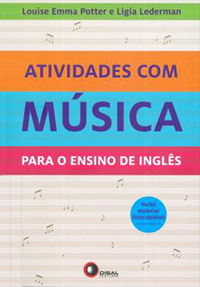Project based learning (PBL) can be very confusing and strenuous if we try to apply it without fully understanding the concept, steps and objectives. However, the outcome is truly amazing and the learning objectives go way beyond any course book can give us. What actually discourages us, teachers , is the fact that we never know what the final outcome will be like since it is not up to us, but up to the students. This can be very frustrating as teachers always need to be in control of all the situations (in class and at home). Big change of paradigm.
When we decided to embrace PBL, we knew we were in for an adventure. Nevertheless, we also knew we could not fully embrace it, as working with PBL in a foreign language is not the same as applying it in the mother tongue. Moments of language input, drills, practice, like in any other language class are necessary. As I stated in my last article, PBL is not a new methodology. But is has not been widely used in Language teaching in Brazil. Schools are still thoroughly involved with course books and not only teachers, but students and their parents are fully dependent on course books. I am not in the least against course books, however, I do not believe that they fulfill our student’s needs as learners of a second language. Likewise, teachers have different teaching strategies and again, course books are not able to offer distinct approaches for teacher’s needs. Course books should be a baseline, a guideline for teachers and students and not the full context of a class itself.
Understanding that languages and their cultures carry a relevant relationship to the acquisition of linguistic and cultural competency is an essential starting point for any approach for teaching a second language. I fully agree with a statement below written by Elmes.
With first language learners immersed in their own culture, connections between language and culture often never come to question. For foreign language learners, where true cultural intricacies and understandings are situated well beyond the textbook, an understanding of language assumes a very different form. While it is possible to separate language and culture, one has to question the validity and implications such separation brings (ELMES: The Relationship between Language and Culture)
Having that in mind, we come to the conclusion that language teaching should not be taught without taking other subjects into consideration. Geography, History, Maths and Science are all relevant to language acquisition. PBL is a way to bring them all together. Projects provide us with opportunities to have students engage in real world communication remembering that the projects are the main dish and not the dessert (an expression coined by Larmer and Mergendoller -2010).
Working in a mainstream school, and knowing that we could not simply ignore the course books, we decided to choose some units from the course book and transform them into our project theme. From the main topic of the unit, the teachers decided on a driving question for students to begin their inquiry. Teachers were aware of the language that had to be presented throughout the unit, made sure there were slots of language input during the project steps. As we stated before, teachers and students were not use to this kind of methodology, they were not used to working in groups, being autonomous, collaborating and assessing themselves and their peers. They also needed to be understand these new concepts of learning and teaching. These are the advantages PBL brings into the language classroom. The skills of the 21st century some hand in hand with skills we are trying to apply in the classroom.
Imagine you are working on a unit about clothing (very common in course books). If students in your classroom like fashion, a good driving question to start a project could be:
“Why aren’t my clothes made in my country?”
From that driving question, students can come up with the questions that will guide their research. In this particular case, they can be something like that:
From this point, students are divided into groups and each group sets off on a separate path and inquiry related to their own interests within this topic. They could think of society and consumerism; they could be more interested in types of clothing and fashion, or maybe import and export of clothing. The sky is the limit. The teacher is there to monitor the work and help them with the vocabulary and language input they need. Teachers are no longer the central part in their learning. Students become agents of the own learning according to their interests. Learning becomes interesting, dynamics and meaningful. Students are researching, having the language as a means and not an end. Obviously, the mother tongue comes up in the research and steps during the project, however the final presentation, which is the student’s choice, is always in the target language. While we monitor students during the project, we can apply strategies of differentiated instruction, giving special attention to students who have difficulties and engaging students who are above the level.
PBL can be time consuming and difficult when we first begin, however, when you realise how much more your students are involved and motivated, the work you put into it is definitely worthwhile.
LIVRO RECOMENDADO
